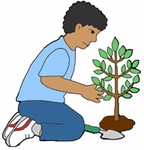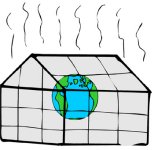
Worksheets and No Prep Teaching Resources
Reading Comprehension Worksheets
Caring for Earth

Caring for Earth
 Worksheets and No Prep Teaching Resources Reading Comprehension Worksheets Caring for Earth |
 Caring for Earth |
| edHelper's suggested reading level: | grades 7 to 9 | |
| Flesch-Kincaid grade level: | 8.31 |
| Print The Gas Effect, Part 1 (font options, pick words for additional puzzles, and more) |
| Quickly print reading comprehension |
| Print a proofreading activity |
|
The Gas Effect, Part 1
By Trista L. Pollard |

|
 1 Imagine a warm winter day in New Jersey.... Wait a minute, a warm winter day in New Jersey? That sounds impossible! You cannot have a warm winter day in the northeastern United States. That is just like having snow in southern California. Well, with global warming our seasons on Earth may never be the same again! Global warming is the observed rise of the Earth's average temperature over time. Most experts agree it is due to the production of greenhouse gases. Greenhouse gases, which occur naturally in the Earth's atmosphere, trap the sun's heat to warm the Earth.
1 Imagine a warm winter day in New Jersey.... Wait a minute, a warm winter day in New Jersey? That sounds impossible! You cannot have a warm winter day in the northeastern United States. That is just like having snow in southern California. Well, with global warming our seasons on Earth may never be the same again! Global warming is the observed rise of the Earth's average temperature over time. Most experts agree it is due to the production of greenhouse gases. Greenhouse gases, which occur naturally in the Earth's atmosphere, trap the sun's heat to warm the Earth. |
Create Weekly Reading Books
Prepare for an entire week at once! |
| Leave your feedback on The Gas Effect, Part 1 (use this link if you found an error in the story) |
 |
Caring for Earth
|
 |
High School Reading Comprehensions and High School Reading Lessons
|
 |
Earth Day Activities, Printables, Worksheets, and Lesson Plans for Kids
|
 |
Science
|